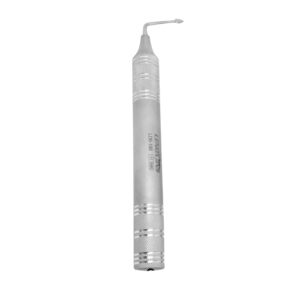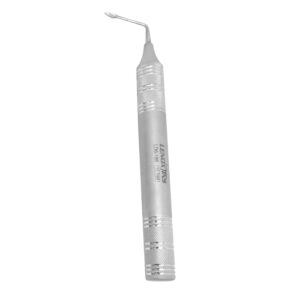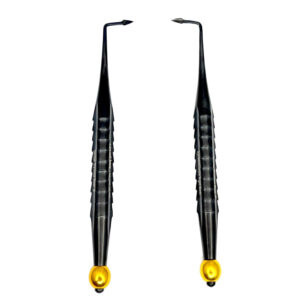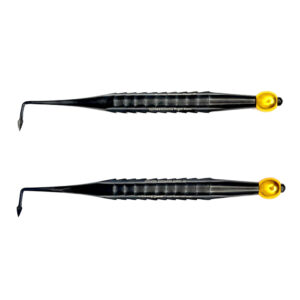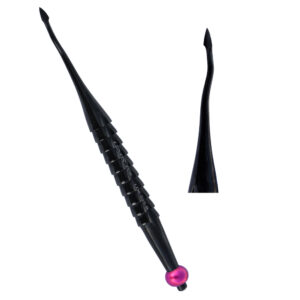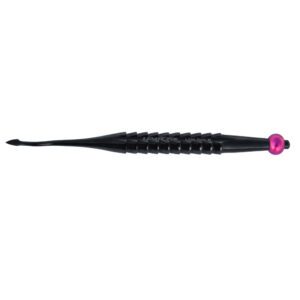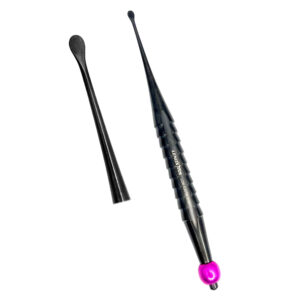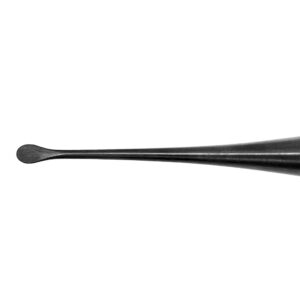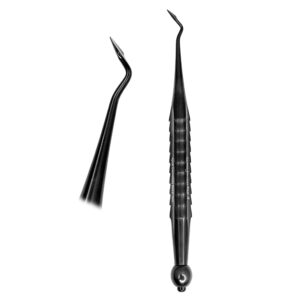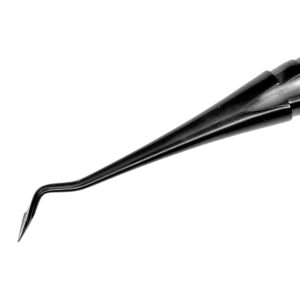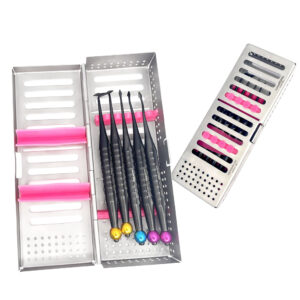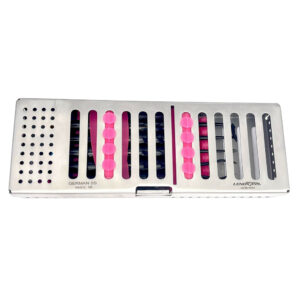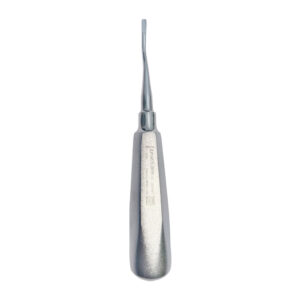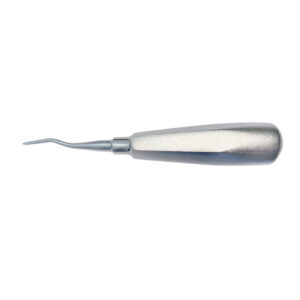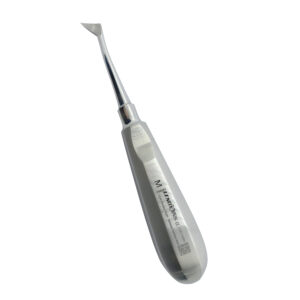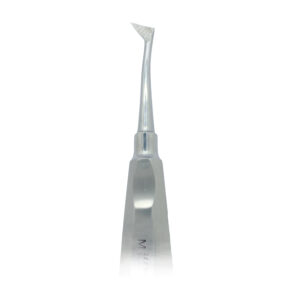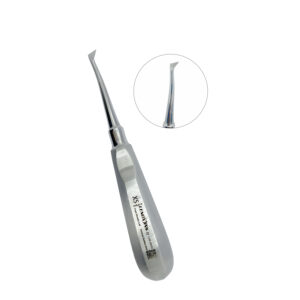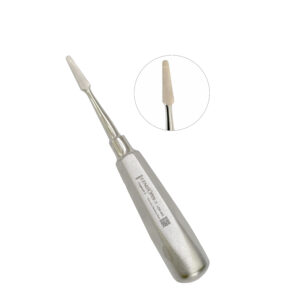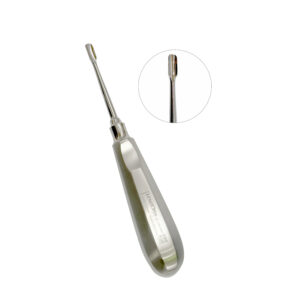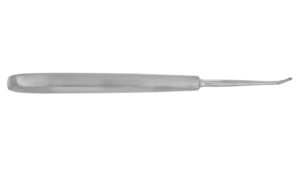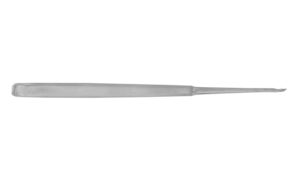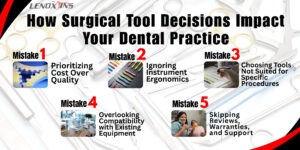Dentist’s Choice: Periotome vs Elevators for Extractions
- lenoxinstro
- March 17, 2025
- Dental Instruments
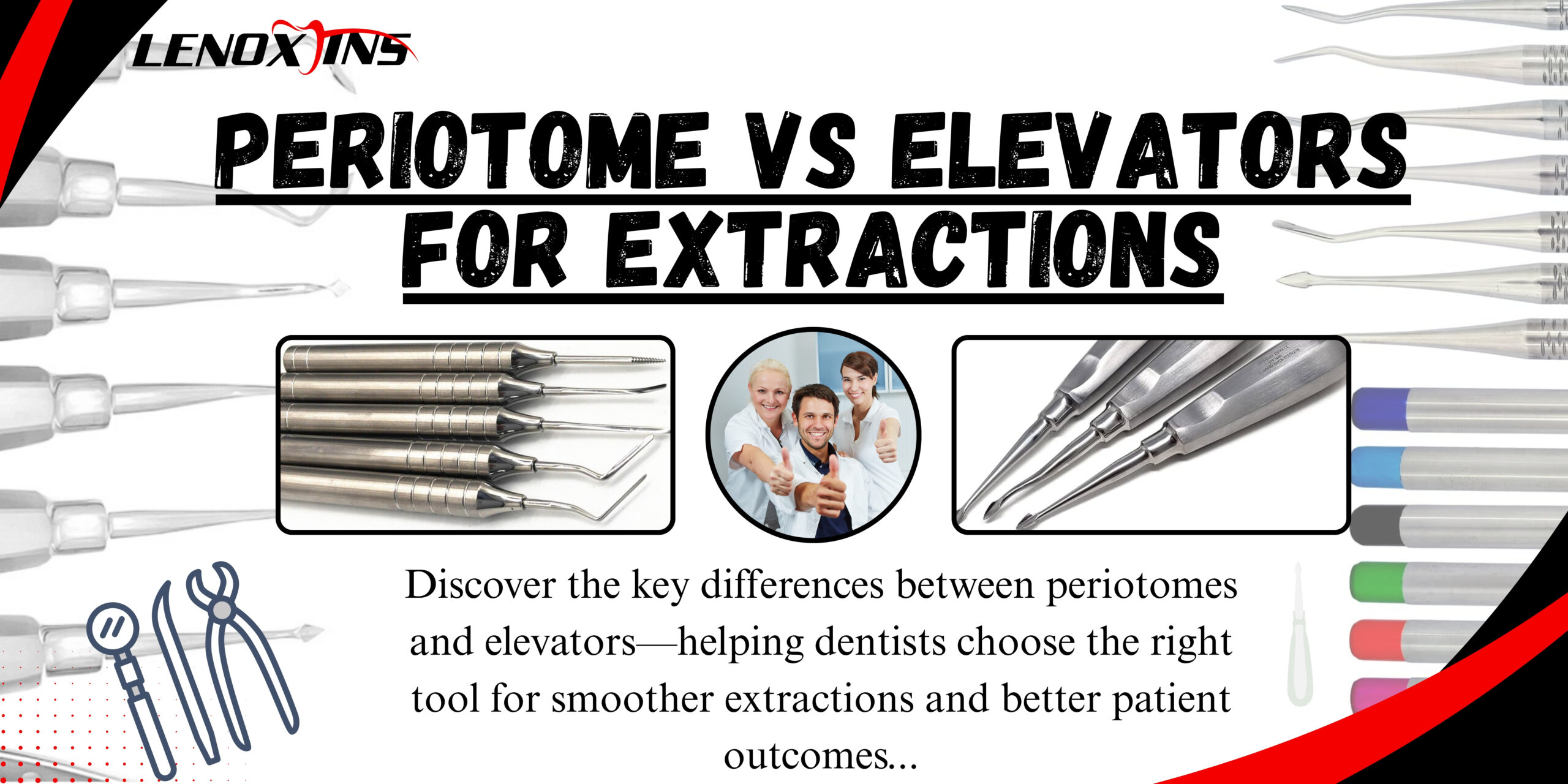
Periotome vs. Elevators: A Dentist’s Guide to Precision Tooth Extractions
Are precision tooth extractions challenging in daily practice? This guide compares the periotome and elevators, focusing on instrument choice, advanced techniques, and common mistakes and fixes. Dentists will learn effective methods to achieve safer extractions using the right tool for the right situation. Readers gain practical insights and clear, actionable advice that address everyday extraction challenges in the dental industry.
Precision tooth extractions present a unique set of challenges in daily dental practice, making it essential for practitioners to select the right instruments and techniques. In this context, the comparison between periotomes and elevators plays a crucial role in determining the safest and most effective extraction methods. While elevators are widely recognized for their ability to luxate teeth and facilitate removal, periotomes offer a distinct advantage when it comes to preserving surrounding bone and soft tissue, particularly in cases of impacted or stubborn teeth. Understanding the nuances between these tools allows dentists to tailor their approaches based on individual patient needs, maximizing outcomes and minimizing complications.
This comprehensive guide addresses common pitfalls encountered during extractions and highlights advanced techniques that can enhance procedural efficiency. By providing practical insights into instrument selection, as well as actionable advice for common mistakes and their remedies, this resource empowers dentists to navigate the intricacies of tooth extractions with confidence. Whether a practitioner is dealing with a routine extraction or a more complex case, employing the right tool for the situation can significantly achieve safer outcomes. Ultimately, by focusing on precision and technique, dentists can improve their efficacy in tackling everyday challenges in the dental extraction landscape.
Periotomes
Elevators
-
-
-
-
-
-
Luxating Elevator X-Thin 5mm STR
Rated 0 out of 5CA$50Original price was: CA$50.CA$30Current price is: CA$30. -
-
Key Takeaways
- instrument selection impacts extraction procedure outcomes
- periotomes support precision and soft tissue conservation
- elevators provide controlled leverage during extractions
- instrument sterilization underpins clinical safety
- lenox instruments delivers reliable dental tool solutions
Why Instrument Choice Matters
The right instrument choice impacts the effectiveness of extraction procedures, significantly affecting periotome vs elevator efficiency during treatments.
A solid understanding of when to use a periotome supports precision and patient safety during extractions:
- Instrument design and application
- Optimal performance parameters
- Procedural best practices
Selecting an elevator for root separation or opting for an elevator for premolar extraction ensures proper technique and minimal trauma during removal.
Maintaining instrument quality by learning how to sterilize Periotomes, such as the Super Flexible Periotome 2mm STR, and identifying when to use a periotome reinforces a professional approach to extraction procedures. Visit our Shop for comprehensive Dentistry Solutions.
Periotome: The Minimally Invasive Specialist
The periotome plays a key role in ensuring minimal trauma during tooth extractions, addressing concerns such as periotome vs luxator differences effectively. It offers precision in procedures that require careful handling of periodontal tissues. Our Vision and Innovation have led to the development of tools like the Super Flexible Spade Periotome Right Micro Serrated and the super flexible periotome 2mm STR.
The instrument is designed for smooth gingival separation, assisting in procedures where an elevator for surgical flaps might be considered. Its unique design minimizes damage while providing optimal performance during delicate procedures.
Clinicians note the clear difference between periotome and elevator when performing extractions that necessitate accurate cutting and tissue preservation. The periotome maintains soft tissue integrity even in procedures typically reserved for an elevator for surgical extractions.
Advancements are evident in instruments like the Bernard Syndesmoyome Luxating Periotomes Set of 5 in Cassette, which offer consistency and reliability during extractions. The set reinforces the importance of selecting the appropriate tool to meet specific procedural demands.
Elevators: The Leverage Experts
Dentists analyze periotome vs elevator cost to determine the most efficient option for extraction procedures while maintaining budget considerations.
The elevator for root tip removal has proven to improve extraction outcomes by offering specific leverage points during tooth separation.
Clinicians compare the periotome dental tool with Elevators to ensure that each instrument meets the requirements for minimal trauma and effective performance.
The elevator for bone condensation features an ergonomic elevator handle design that supports stability and precision during challenging extractions.
Periotome vs. Elevators: When to Use Each
When it comes to dental extractions, practitioners often weigh the options between using a periotome or an elevator. Each tool serves a unique purpose and can be better suited for different clinical situations. A periotome is a specialized instrument designed to sever periodontal ligaments with minimal trauma to the surrounding bone and soft tissues. It features a thin, sharp blade that is effectively used to create a pathway for tooth removal while preserving the integrity of the alveolar bone. This tool is particularly beneficial in scenarios involving teeth that are tightly adhered to the surrounding periodontal structures, as it allows for greater precision and control during the extraction process.
On the other hand, elevators are versatile instruments designed primarily for loosening teeth prior to their extraction. They come in various shapes and sizes, with some specifically tailored for anterior or posterior teeth. Elevators work by applying leverage to dislodge the tooth from the socket, often requiring a considerable amount of force depending on the tooth’s retention. Dental professionals may opt for an elevator in cases where teeth are severely impacted or when there is a need to gain access to a tooth that is deeply seated within the jaw. In essence, while both tools serve the end goal of tooth removal, their applications are situational. Dentists must carefully assess each extraction case to determine whether a periotome or an elevator would provide the best results, balancing factors such as the tooth’s condition, surrounding tissue health, and the overall extraction strategy.
The selection between periotome and elevator depends on procedure specifics and the desired outcome. Clinicians consider how to avoid root fracture with periotome when assessing case details.
Experts value instruments such as titanium nitride periotomes for their durability and precise performance. Key factors for choosing the right tool include the following:
- Procedure type
- Instrument design
- Patient safety
Dental professionals opt for an elevator for crown lengthening when the situation requires controlled leverage and minimal tissue impact. The use of autoclave-safe dental elevators ensures that sterilization remains straightforward and efficient.
The practical application of an elevator for cyst enucleation demonstrates targeted effectiveness in managing complex extractions. Dentists tailor instrument choice based on clinical requirements and patient conditions.
Advanced Techniques
The precise measurement of periotome penetration depth is crucial for successful extractions, particularly in cases involving periotome for wisdom teeth. The technique ensures optimal instrument positioning for meticulous tissue separation.
Clinicians employ a periotome for minimal bone loss when performing extractions that require careful conservation of the alveolar ridge. This approach minimizes damage and supports quicker healing for patients.
Dentists consider elevator blade curvature types to tailor instrument use to the specific anatomy of a tooth. The selection of an appropriate blade curvature enhances leverage and overall efficiency during extractions.
Specialists compare periotome vs elevator in geriatrics while determining treatment protocols for older patients. The choice prioritizes patient safety and soft tissue preservation as part of a refined surgical technique.
Common Mistakes & Fixes
Clinicians often encounter a steep periotome vs elevator learning curve during early practice, requiring dedicated training to master each tool’s subtleties. Postsecondary training supports swift improvement in tool handling.
Practitioners note that Periotomes offer a reliable means for atraumatic extractions when used appropriately. Regular practice reinforces proper instrument handling and patient comfort.
Specialists ask how to choose between periotome and elevator by assessing case specifics and tissue considerations. Clear procedural protocols assist in making the right decision for predictable outcomes.
Experts compare periotome vs elevator vs luxator to ensure ideal treatment strategies in complex cases. They maintain a focus on periotome for atraumatic extractions to promote tissue preservation and efficient clinical practice.
Why Choose Lenox Instruments?
Lenox Instruments stands out as the best brand for dental elevators with precise engineering and consistent performance in extraction procedures. Connect with Us for expert advice and reliable solutions in dental tool selection.
Professional clinicians rely on periotome vs elevator technique videos provided by Lenox Instruments to gain insight into effective instrument handling. These videos serve as a valuable resource for enhancing procedural efficiency.
Lenox Instruments offers a periotome for pediatric dentistry that meets strict safety standards for young patients while ensuring effective extractions. Their range includes the best elevators in Germany, recognized for superior design and clinical performance.
Practitioners appreciate the quality and durability of Lenox Instruments, which consistently meet clinical demands. Connect with Us to learn why their product lineup remains a trusted resource in dental extraction techniques.
Frequently Asked Questions
What advantages does a periotome offer for tooth extractions?
A periotome offers controlled, precise extractions by minimizing damage to the surrounding tissues and preserving bone structure. This tool’s sharp, specialized blade reduces surgical trauma during tooth removal.
Its design assists practitioners in completing procedures with lower discomfort for patients and shorter recovery periods, making dental extractions more predictable and efficient.
How do elevators aid in tooth extraction procedures?
Dental elevators serve as key dental instruments during tooth extraction, easing loosening of the tooth by gently applying rotational force. This tool minimizes trauma to surrounding tissues, thereby simplifying the procedure and improving overall outcomes in dental practice.
Lenox Instruments representatives note that these devices provide increased precision and control. Such capability helps dental professionals achieve efficient extractions and promote better comfort and safety for patients during treatment.
When should a dentist use a periotome over an elevator?
A periotome proves beneficial when precise periodontal ligament separation and minimal tissue damage are crucial. It allows dentists to carefully sever attachments during extraction, providing refined control and ensuring the integrity of adjacent bone and soft tissues.
Elevators are more suited for mobilizing teeth with looser attachments. The periotome becomes preferable in scenarios demanding delicate manipulation, particularly near sensitive structures like nerves or sinus areas.
What techniques optimize extraction precision with these instruments?
Advanced calibration procedures paired with routine maintenance ensure optimal extraction precision. Operators benefit from consistent parameter settings and instrument checks that reduce variability and help sustain accuracy in sample analysis.
Skilled personnel training further tightens precision. Specific settings for pressure, temperature, and extraction timing are adjusted based on instrument performance data, leading to reliable and repeatable results in sample processing.
Why is choosing Lenox Instruments beneficial for dental procedures?
Lenox Instruments delivers reliable, high-quality tools designed for precision in dental procedures. Their equipment meets rigorous industry standards, ensuring smooth operations for dental professionals and improved patient outcomes.
The company offers expert support and thorough training. Dental professionals experience efficiency and improved care during treatments, making Lenox Instruments a trusted partner in the dental industry.
Conclusion
As I wrap up this discussion, it’s important to reflect on the key takeaways that we’ve explored together. Conclusions serve a pivotal role in any piece of writing; they not only summarize the main points but also reinforce the significance of the argument or narrative presented. Throughout this journey, I’ve aimed to illustrate how effectively conveying our messages can lead to greater understanding and connection with our audience. A well-crafted conclusion not only ties everything together but also leaves a lasting impression, encouraging readers to reflect on the content long after they have finished reading.
In my experience, a strong conclusion goes beyond mere summary; it should evoke emotion and inspire action. Whether it’s prompting readers to rethink their perspectives, consider new ideas, or engage more deeply with the topic at hand, the conclusion is where you drive home your central message. As I conclude this blog post, I encourage you to take these insights and apply them, not just in writing but in various aspects of communication. Crafting a compelling conclusion can transform your work from merely informative to genuinely impactful, inviting dialogue and fostering a deeper connection with your audience.

